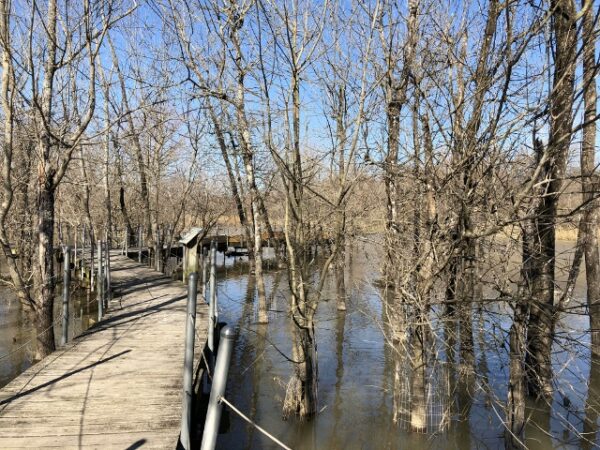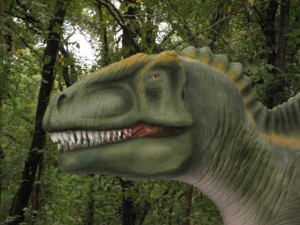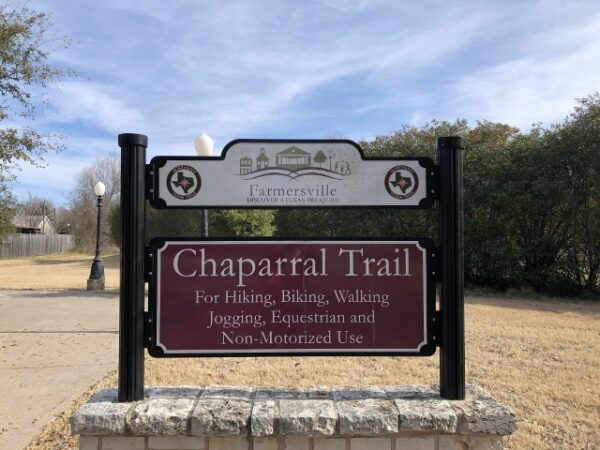
If you want a longer walk to stretch your legs, I suggest the Chaparral Trail. The section between Farmersville and Merit provides mountain bikers and hikers five-miles of improved trail surface through rural farmland and township.
Chaparral Trail
Sponsors boast about the trail’s multipurpose use for hikers, bikers, and yes, horses, though I’ve yet to encounter an equestrian on the path. The historic Onion Shed in Farmersville serves as the western-most trailhead. A city park and large adjacent lot offer parking, picnic, and restroom facilities, along with easy trail access. The town of Farmersville maintains the first five miles of Chaparral Trail. The level pathway is paved for 2.5 miles and then becomes crushed gravel for the final miles. The paved surface makes it an easy trail for families with small children and strollers.
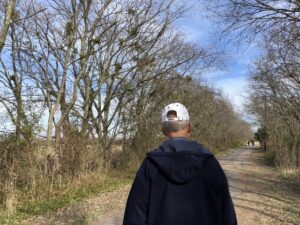
The path crosses streets through town, skirts schools and parks, and traverses past East Texas farms. I enjoy that change of scenery and its easy ambiance. Walking the Chaparral Trail seems like a stroll through time to catch a glimpse of rural Texas before super highways and urban creep. I appreciate the length of trail, too. If you want a ten-mile hike, then trek the entire distance to Merit and then retrace your steps back to Farmersville. If you’d prefer a shorter walk, you can do that, too.
Northeast Texas Trail System
The Farmersville to Merit path is part of the ambitious Northeast Texas Trail system. The 130-mile project follows the unused routes of the Union Pacific and Chaparral railroads. When complete, it will connect Farmersville in the west, to Paris, and finally to New Boston in the east.
Rail Banking
In the 1980s, a law allowed railroads to ‘bank’ unused rail lines through lease, sale, or donation. This left old rail right-away intact for use as trail systems. Three private agencies banked the 130 miles now known as Northeast Texas Trail. One of the three, Chaparral Rails to Trails, banked the section from Farmersville to Paris. In total, the three banking entities control unused rail line connecting 19 rural towns.
It gets complicated, but many of the small towns along the route obtained quit claim deeds from the banking entities for sections near their municipalities. For example, the City of Farmersville quit claimed the land between it and the Collin County line. That’s the part of the system I’m most familiar with. On my hikes, it’s apparent the trail draws both out-of-town visitors and local residents.
Northeast Texas Trails Coalition
Through grants and donations, bit-by-bit, the 130-mile trail system has been maintained and improved. Still there are sections that are barely passable … it’s an ambitious project to keep up a 130-mile trail. Perhaps the most difficult challenge is repair of the old railroad trestle bridges. The Northeast Texas Trails Coalition (NTTC) maintains a website and Facebook page to help people navigate through all trail sections. Maps delineate trail conditions and cautions in town-to-town segments. You can also query NTTC on their Facebook page to get updated information from Rail Stewards. The group is working with the Texas Legislature for funding and are exploring options to designate the trail system as a state park.
Farmersville
I have a confession to make. Often my hike on the Chaparral Trail is an excuse. I love the little town of Farmersville. With brick and limestone storefronts spanning eighty years of architectural styles, the town exudes charm. Use a little imagination and you can picture classic Studebakers and old Ford trucks parked on the diagonal outside Dyer Drugstore instead of today’s Hondas and Toyotas. Like many small Texas towns, there are vacant storefronts, however, in Farmersville you sense the possibility of rebirth. The Odd Fellows Lodge built in 1899 has been restored and is now home to Fiber Circle Yarns. A realtor, a physician’s office, and an engineering firm have taken up residence in other restored downtown properties. Throughout the historic area, you will find eclectic antique stores.
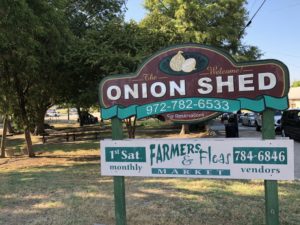
Farmersville delivers on a collection of small antique malls, you know the type, big buildings partitioned into smaller stalls filled with a multitude of collectables and junktiques. Country Roads Trading Post (110 McKinney Street) has 50 smaller vendors with an assortment of goods from handmade lavender soap to 1940s kitchenware. I found some particularly well-priced treasures there. Main Street Antiques & More (103 S Main Street) is a smorgasbord of china, crystal, depression-era glass, and more.
When You Go
Farmersville is located off US Route 380 between McKinney and Greenville. The Chaparral trail head is near the old Onion Shed. Farmersville Visitors Center is located at 201 S Main Street, though hours vary. A self-paced walking tour of historic Farmersville buildings can be downloaded before you go.

